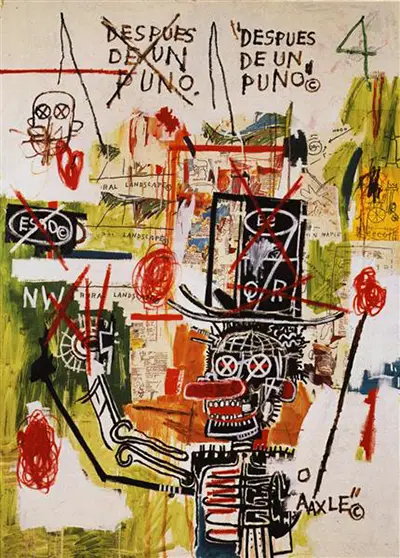Basquiat had a background that was decidely different to most modern artists, and this ensured that many of the influences on his work were also different. He had his roots from Afro-Caribbean culture, whilst most other famous artists of this era was from middle class, and predominantly white cultures. This allowed him to offer a unique approach and some of the themes experienced by his community would also appear in some of his paintings. It was also necessary for his talent to be particularly impressive because of the inevitable challenges that he would have faced as he started to promote his career. As well as being of a different race, Basquiat was also from a poor upbringing and even homeless at one point. All of these challenges appear to drive on his work and perhaps were a benefit to him in the long run, once he had managed to get enough attention to the work that he was producing.
We find all manner of different scribbles and writing across this piece, with the words Despues de Un Puno, written twice across the top of the canvas. One of these instances has been crossed out, but left so that you can still see what was written there originally. The main focal point of this painting must be the black figure in the foreground, close to the bottom of this two metre-long canvas. The gentleman is captured in the way that Basquiat loved to work, with almost a mechanical construction of the head. There is a tall black hat upon his head, and his right arm points off into the distance. Further scrawls of green and yellow pastels then fill other parts of this complex scene which requires one to study it for quite some time in order to appreciate each and every detail left by the artist.
This was an artist who overcame many obstacles during his life and career to leave behind some of the most valuable artworks in history. His style was unique, sharing ideas and techniques of others but then combined with his own personal circumstances and culture which provided a fusion of brilliance and flair. His style was consistent across the most famous paintings that he produced, predominantly making use of acrylics, oil pens and collage art. He was entirely modern and fresh, and therefore particularly suitable for the rising New York art scene which was leading international art for several decades of the 20th century and continues to thrive today.


